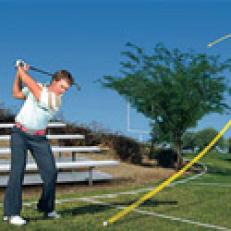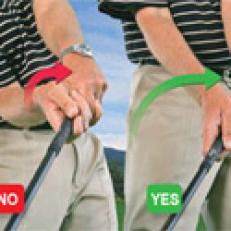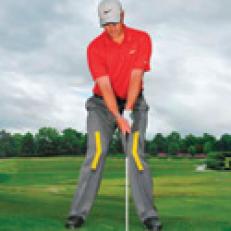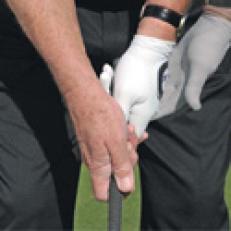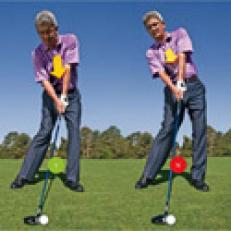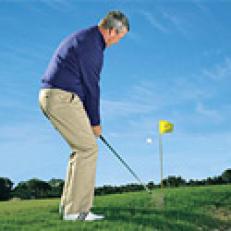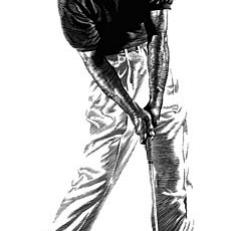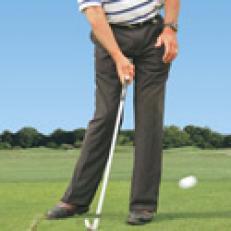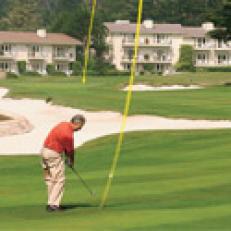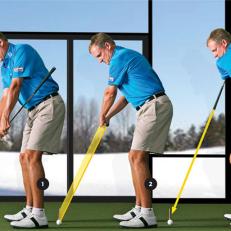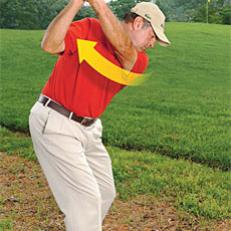Breaking 80
By
Bobby Clampett with Ron Kaspriske
Photos by
Dom Furore
October 21, 2007
I'm blown away that so many reputable golf teachers instruct their students to strike the driver on the upswing.Regardless of whether a ball is on a tee or on the ground, the swing bottom must consistently be four inches in front of the ball. And swinging slightly down on the ball with the driver goes a long way toward ensuring that.It also helps keep the left wrist flat at impact, because as soon as the club begins to swing up, there is a tendency for the left wrist to break down and hinge upward.
Homer Kelley's The Golfing Machine was the book that most influenced my game, and Ben Doyle taught me the book's aiming-point concept. It works like this: Draw an imaginary line from your hands at the top of the backswing to a point a foot or so in front of the ball along the target line. As the backswing transitions to the downswing, the goal is to have your hands pass over that mark in front of the ball before the clubhead does. Just a swing or two using this technique will move your divots forward and make your impact more solid.
One of the most overlooked fundamentals of the golf swing is the point of pressure created by the club resting against and across the middle joint of the right-hand forefinger. This pressure point transforms that finger into the "trigger finger," meaning it plays a major role in the loading of the club on the backswing and the lagging of it on the downswing.Where the grip falls across that finger is where we feel the lag of the club. To use this effectively, lay the handle diagonally across the middle joint of the trigger finger. During the swing, you want to feel the club's weight in that spot the entire time.



